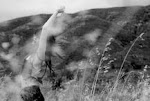
It’s not easy to define authentic Argentinean food because there is a lot of influence from European immigrants, but, if one could get close, a dish called "Puchero" would certainly be it. Yes, we all know that steak is a very Argentinian dish but except for places like India, beef is quite common everywhere in the world, really.
Puchero on the other hand, although also an adaptation of a Spanish dish, is a typical Argentinian meal, not consumed (at least not the way it's made here), in other parts of the world.
The meal consists of serving various boiled meats and vegetables that are served separately plus a soup plate.
Argentines relate this meal to their families. It is a popular, "homey" winter-ish meal, used as an excuse to get together, to talk and enjoy. There are restaurants that prepare it, although it is not very common. The Plaza hotel makes a good one, it is served on Sundays. El Globo and El Imparcial are other well known and traditional places that serve it, or you could try Jose Luis'.
How do I make Puchero?
Put some music on and serve yourself and who ever else is in the kitchen with you some wine.
Boil 5 liters of water with a little thick salt, an onion cut in 4 pieces and leek. When it boils, add 2 kilos of beef and let it slowly cook for 45 minutes.
Add two breasts of chicken, 400gr of bacon and 6 chorizos (like a kind of sausage); 5 potatoes cut in half, 5 carrots, pumpkin cut in half, 5 sweet potatoes and celery.
When you consider that there are about 7 minutes left for it to cook, boil 5 corns. In a separate pot boil chickpea which sat in water since the night before. Serve everything in a big bowl, and the broth in a separate recipient as a starter. Add angel hair pasta or rice to it and voila! you have your Puchero.
Hope you like it, and please let us know if you have tried something similar, or what is your favorite dish on a cold winter day!
Restaurants:
El Globo: Hipólito Yrigoyen 1199, Bs.As.
El Imparcial: Hipólito Yrigoyen 1201, Bs. As.
José Luis: Quintana, Av. 456, Bs. As.
Via gourmet recipe and photo.


















































